We’ve picked one recently completed commercial project from each of the Australian states and we want you to decide who should win the title of our nation’s best commercial architecture project for 2014.
All the listed projects took out the Commercial Architecture category at their respective state architecture awards earlier in 2014 and will now face-off at the AIA National Architecture Awards in November.
Leave your comments and vote below.
South Australian Health and Medical Research Institute(SAHMRI) by Woods Bagot, South Australia
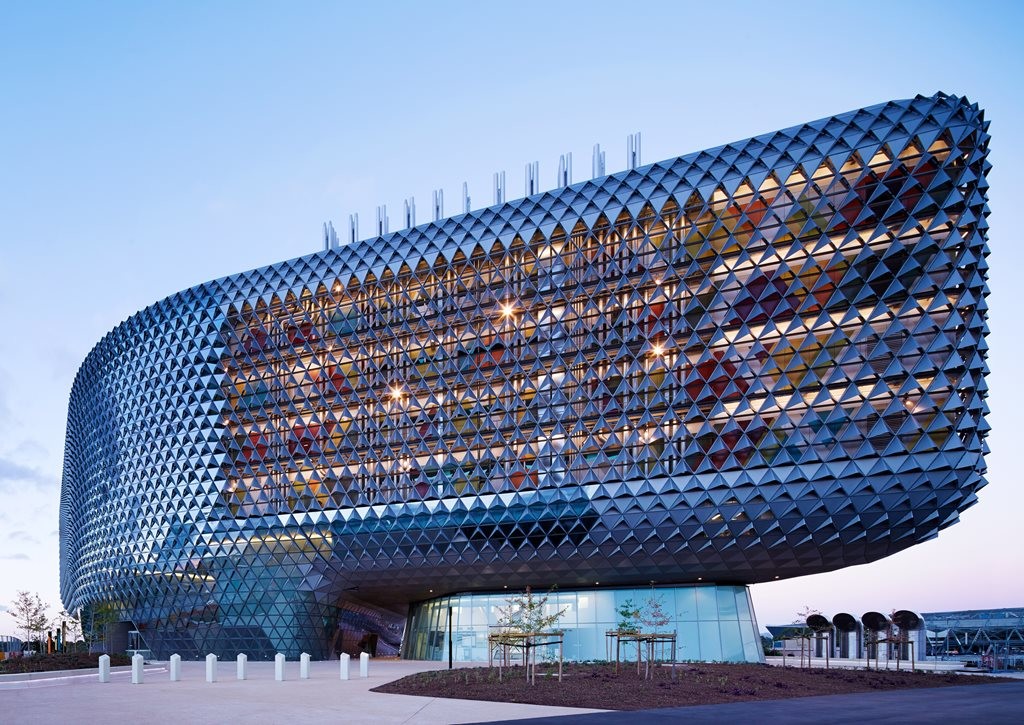
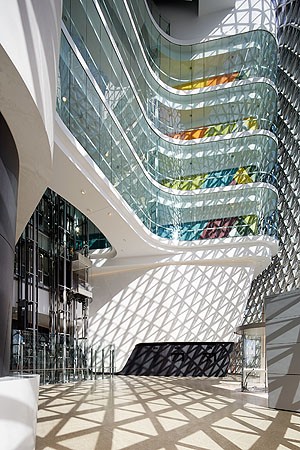
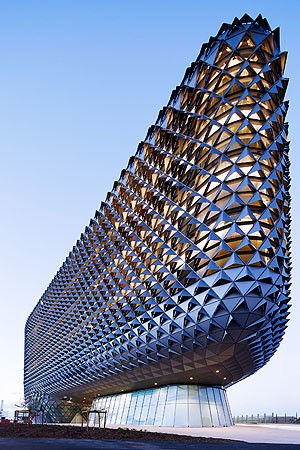
Images: Peter Clarke
The South Australian Health and Medical Research Institute (SAHMRI) is Woods Bagot’s answer to a brief centred on promoting collaboration and medical discovery through built form.
Nine research modules within a triangulated diagrid facade will house up to 675 researchers, fostering innovation and improvements in community health services.
“Key to the success of SAHMRI is its central proposition: a new and liberating laboratory typology promoting collaboration and medical discovery, attracting the world’s best researchers,” said the architects.
“The sculptural qualities of SAHMRI’s form aim to inspire and promote the building’s function. The transparent articulated facade showcases internal atria; the form is further expressed by unique triangulated diagrid facade inspired by the skin of a pinecone.”
Key features:
-
The project is on target to achieve a LEED Gold rating, the first for a laboratory building in Australia. Passive floor plate design that responds to the internal programme and provides maximum daylight where needed.
-
Intensive environmental analysis tested and adjusted the building form to achieve its best solar orientation.
-
The building’s envelope skin, made up of a triangulated dia-grid, adapts to its environment by the design of the sun shades responding to their location and orientation to provide the most efficient protection from the sun and heat.
-
The unique facade is designed to improve daylight, reduce heat and glare and maintain vision for a healthy internal environment.
-
The developed triangulated facade and sunshade design uses parametric modelling tools to integrate environmental, programmatic, and formal requirements to generate a shading system that changes accordingly. This allows it to deal with sunlight, heat load, glare, and wind deflection, while maintaining views and daylight.
8 Chifley Square by Lippmann Partnership/Rogers Stirk Harbour & Partners, NSW
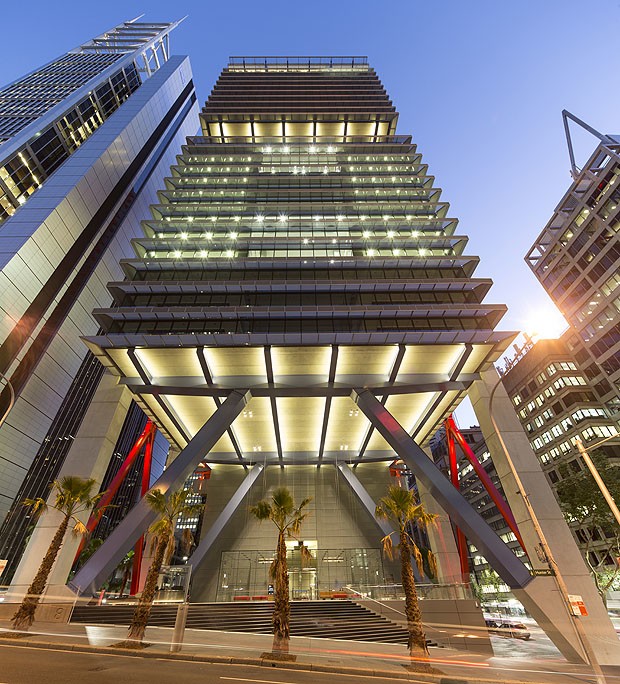
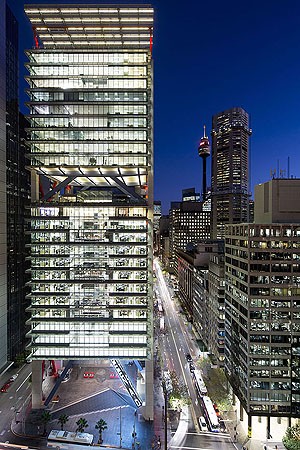

Images: Brett Boardman.
8 Chifley Square was generated by the desire to create a twenty first century workplace with the highest possible standards of user amenity and a world class sustainability target of 6 Star Green Star Design v2 certified rating.
The first office floor plate is elevated 6 levels above the ground level plaza, providing public access to 70 per cent of the site. In summer, this plaza is shaded while in winter it’s bathed in sunshine.
Internally, three level stacked volumes or “commercial villages” provide tenancies of over 2,000sqm, tailored for corporate tenants. The villages consists of full floors every three levels, with two interstitial mezzanines around internal atria between. These villages encourage social connectivity in a democratic workplace environment. The hollowing out of the tower also allows floor space to be redistributed higher up in the air where better views and higher rents are achieved.
The village concept also maximises natural daylight in the office space. External sun louvres beyond the transparent glass façade prevent undesirable heat gain while internal blinds control glare. The vibrant architectural expression is created by the articulation of external unadorned elements.
The tower incorporates a tri-generation system, basement blackwater treatment system, externally shaded and sealed façade, naturally ventilated foyer and a high efficiency and addressable lighting system.
The building is driven by sustainability measures, and extensive metering throughout the building targets and monitors the building’s performance which is then displayed on an informatics system in the ground floor lobby.
Key features:
-
The building will achieve NABERS 5*+ operation (approaching carbon neutral) while the export of energy from the building will mean that other buildings will benefit from low carbon electricity and the site is a net carbon producer.
-
Chilled Beam Ceilings: ‘TROX’ active chilled beam ceilings have been installed and commissioned to deliver air conditioning to all office levels.
-
The roof mounted tri-generation system re-uses waste heat from electricity generation, reducing the load of conventional coal fired electricity supply.
-
The blackwater treatment system is located in the basement and treats sewerage for re-use in the chilled beam ceiling system and other. Likewise the cooling tower water is re-used and concentrated.
-
A highly efficient lighting system utilising T-5 lighting to the floor plates and extensive LED lighting to the perimeter and exterior of the building responds to the needs of building users and the external environment.
-
Externally shaded and sealed façade.
-
Naturally ventilated foyer.
-
The tower incorporates an informatics system visible in the ground floor lobby.
-
Provision for rooftop photovoltaic’s array (subject to future fitout).
55 Elizabeth Street by BVN Donovan Hill, Queensland
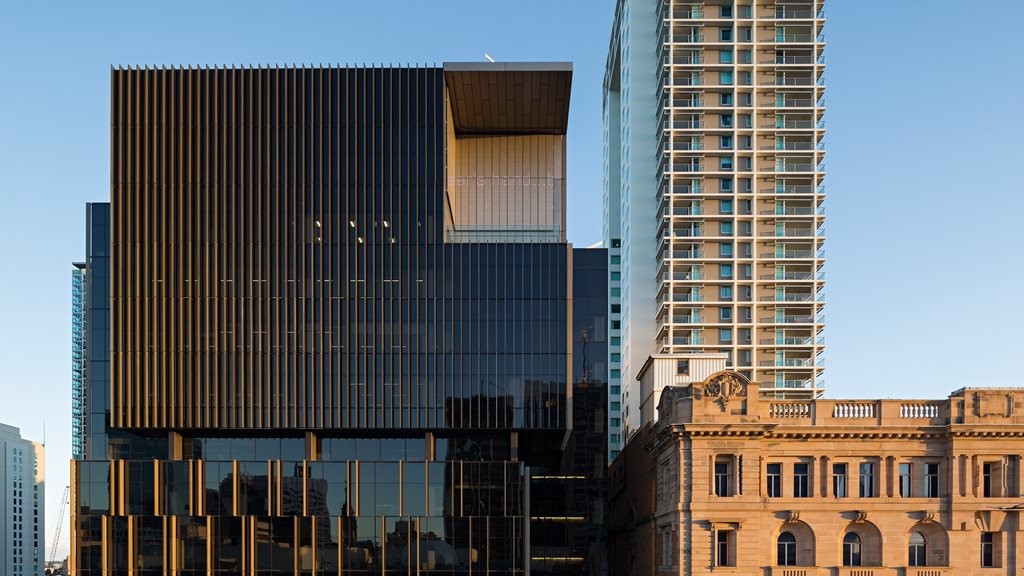
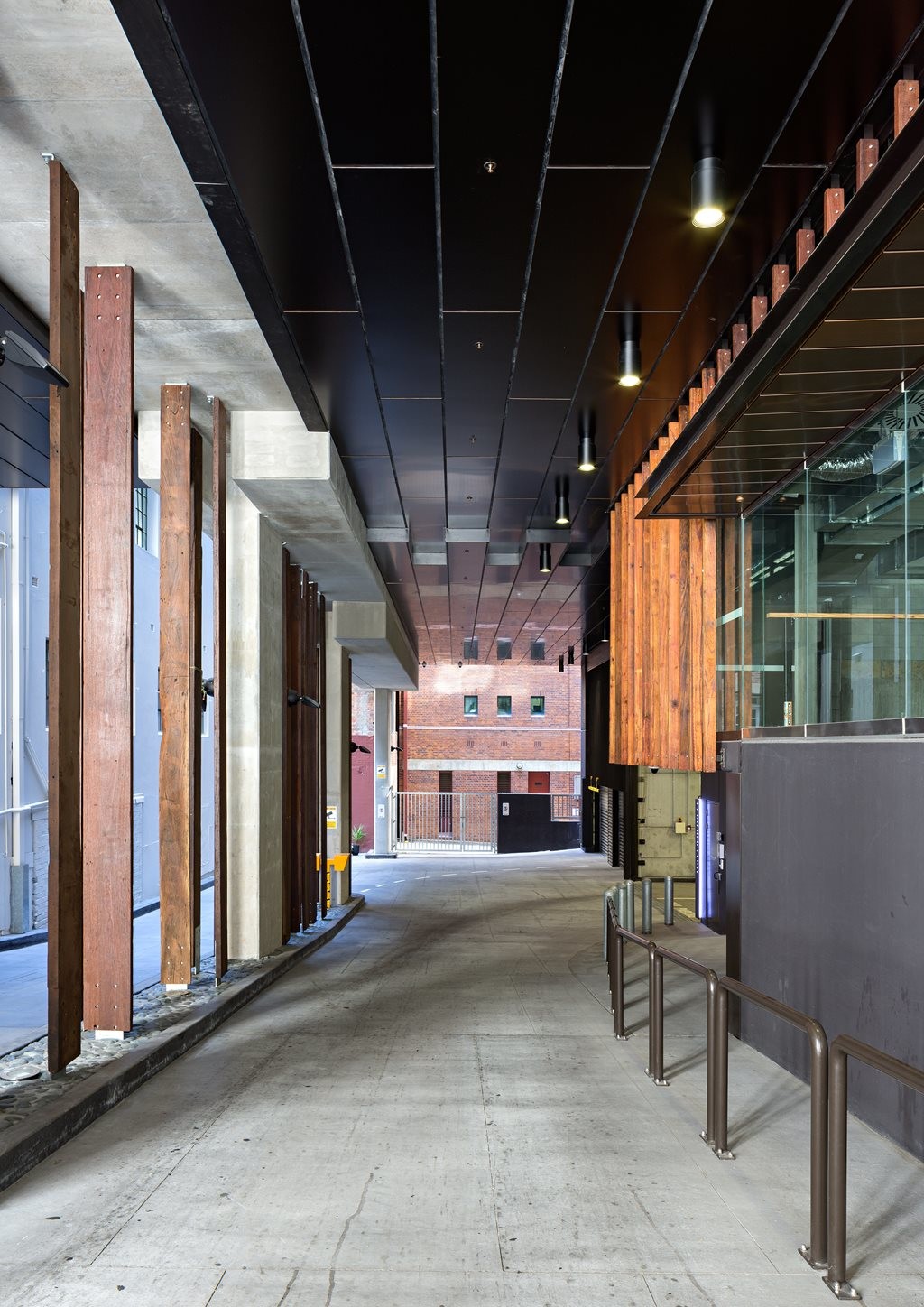

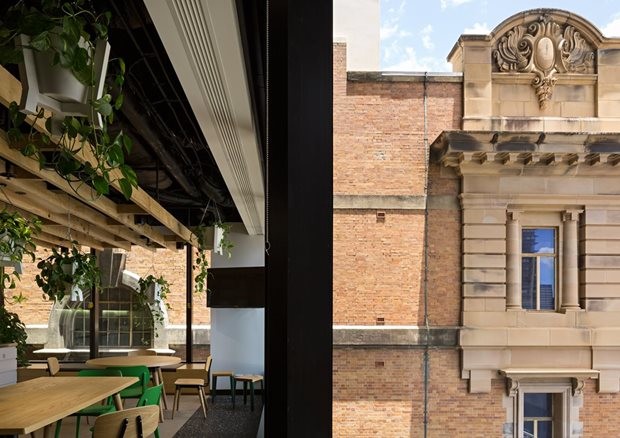
Images: Christopher Frederick Jones.
55 Elizabeth Street creates a new precedent for city office towers, based upon a more profound respect for the scale, materiality and proportion of Brisbane’s heritage architecture.
Located within an important heritage precinct, 55 Elizabeth Street is modelled in a tripartite composition, which provides scale to its context and reflects the historic city development heights.
The architects explain that each tripartite level reflects the contextual qualities of the respective era in a vertical expression.
“Ascending from the entry-level monumental sandstone planes embodying late 19th century ideals; the mid-level tower of performance glazed façade, reflecting mid 20th century development; to the upper-level minimalist anodized sun-screening and city terrace instilling next generation thinking for city buildings,” they said.
“On top a large terrace is carefully recessed into the façade, offering sweeping views over the Brisbane river. Covered by an uplit “eaves” and hosting a large LED artwork, the city terrace creates a strong identity on the city skyline.”
The 18,000sqm floorspace has achieved a 5 Star Green Star rating and is currently being tested for a targeted 5 Star NABERS ratings.
Key features:
-
All facade components are designed for disassembly and reuse;
-
Car parking facilities minimised in both numbers and sizes;
-
Bicycle parking and change facilities maximised beyond the tenants brief,
-
Active Chilled Beams utilised for building HVAC;
-
Rainwater harvesting for reuse and 4 star WELS rated hydraulic fixtures;
-
Elevated landscaped garden to podium roof;
-
Reuse of certified recycled ironbark timber;
-
Reducing material demands through extremely efficient planning achieving an 89-90% NLA to GFA ratio;
-
Integrated workplace fit-out eliminating any redundant base build fit-out works;
-
Material selections to minimise use of Formaldehyde, ODP Insulant, PVC and Volatile Organic Compounds.
Toyota WA Head Office by Roxby Architects, Western Australia
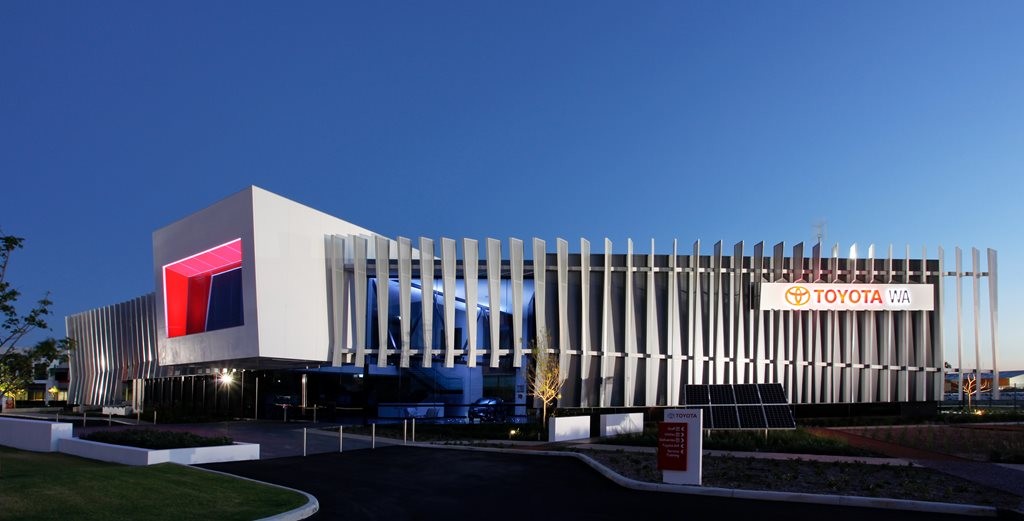
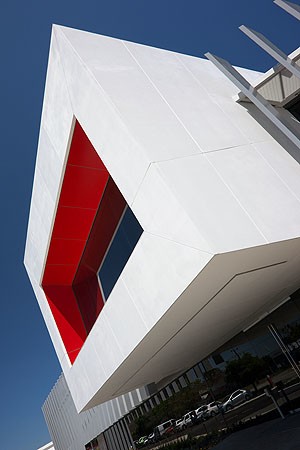
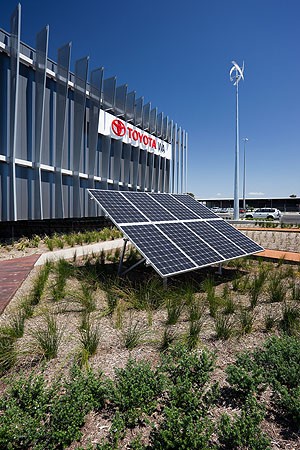 Images: Silvertone Photography.
Images: Silvertone Photography.
Completed in August 2013 in the light industrial area of Kewdale, Perth, the Toyota WA Head Office rejects the local vernacular of concrete tilt-up or metal shed with a new steel framed, insulated panel clad building.
“Occupant amenity is central to the design: the desire to create an inspiring workplace within its industrial location produced breakout spaces, external courtyards and landscaping which provide tranquil meeting and informal zones in an otherwise harsh industrial landscape,” said the architects.
ESD requirements informed the building's size, shape, orientation, materiality, services and furnishings and it achieved a 5 Star Green Star (Office) Design rating.
A Building Management System displays real time data on large screen in lobby, allowing building occupants to see the effect of their behaviour on water and energy consumption.
Key features:
-
Daylighting and views to the outside determined the depth of the building with most glazing situated on the north elevation with external blades and sunshades reducing the amount of direct solar penetration into the building.
-
Glazed internal partitions and insulated skylights allow borrowed and natural light to enter deep into the building.
-
Insulated Kingspan panels used to clad external walls and Low e glazing throughout.
-
Reclaimed Wandoo floorboards used in feature flooring and wall lining.
-
Renewable energy system comprising 22kW PV array and three 1kW wind turbines generate almost 20 per cent of the building's power use in December 2013.
-
All wastewater from the building is recycled to Class A standard and used for toilet flushing, washdown and irrigation.
-
Motion and daylight harvesting sensors control office lighting and switch off lights when not required.
-
Low VOC paints and laminates used throughout.
-
Individual air conditioning systems with local control so energy isn't wasted cooling large or unoccupied spaces.
-
Outside air ventilation with carbon dioxide monitoring to ensure fresh air to all spaces.
-
Most furniture certified by Good Environmental Choice Australia or Carbon Neutral.
Victorian Desalination Plant by Peckvonhartel and ARM Architecture, Victoria

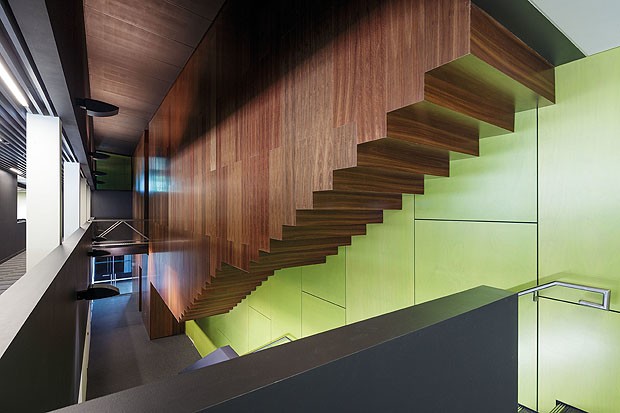
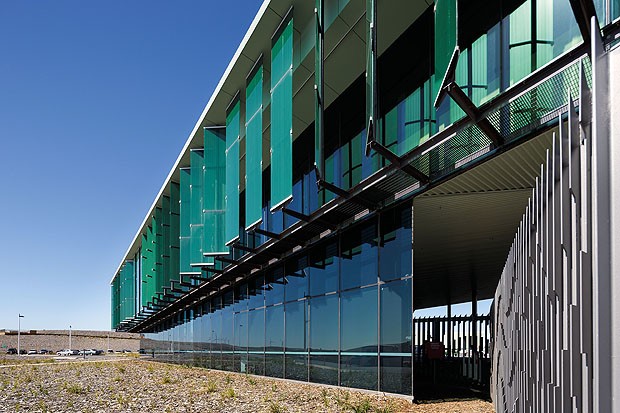 Images: John Gollings.
Images: John Gollings.
With a $3.5 billion price tag, the Victorian Desalination Project by Peckvonhartel and ARM Architecture is one of the biggest and most complex infrastructure projects in Victoria's history. Capable of supplying up to 150 billion litres of water a year if required, it is also the largest desalination plant in the southern hemisphere.
The design emphasises an integration of landscape and architecture, and the architects said they called on a ‘Green Line’ philosophy to deliver the project.
“From this integrated approach we generated the concept of the ‘Green Line’ as the major integrative sculptural gesture,” said peckvonhartel and ARM.
The architects explain that the ‘Green Line’ reference manifests in many forms including the history of land art, the idea of the large figure in the landscape, the history of Aquarius and the contemporary concerns of sustainability
“This approach allowed us to reinstate coastal dune structures degraded by farming, providing visual and audible protection for neighbouring areas,” said the architects.
“The addition of a living green roof provides sound insulation and an approach that was principally concerned with meeting requirements for a high design resolution to the fifth elevation.”
Key features:
-
Low profile buildings, dune creation and coastal habitat restoration with native vegetation integrates the plant into the coastal landscape.
-
A living green roof construction provides an environmentally sensitive design response.
-
Precast concrete retaining walls inset with graphic representations of water ripples.
-
A comprehensive Environmental Management Framework was established and included detailed performance requirements for the process plant, marine structures, transfer pipeline and power supply informed the design.
-
225ha of the 268ha site has undergone one of the largest single ecological restoration projects of its kind ever undertaken in Victoria restoring and enhancing the natural habitat and creating a new coastal park for future generations.
The Apple Shed by Cumulus Studio, Tasmania.

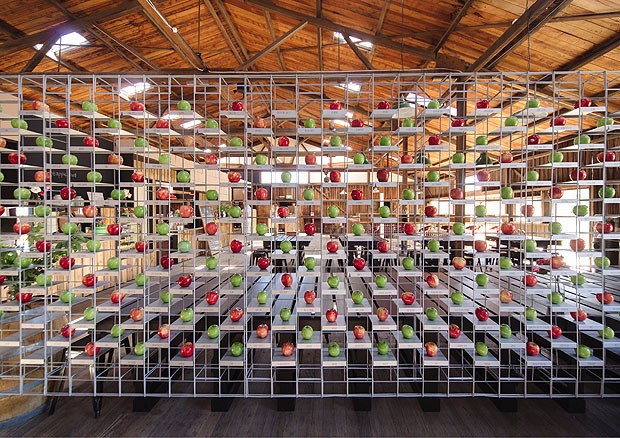
“[The space] was envisaged as a monolithic form, consisting of stacked cardboard boxes, out of which openings and serving areas were carved as required," said Cumulus. Images: Jonathon Wherrett
Perhaps it’s fitting that Tasmania, Australia’s smallest state, has the smallest project on the list. Although small, The Apple Shed conversion project by Cumulus Studio is still a commercial space thatshowcases many design features.
This project involved the conversion of an existing apple packing shed in the Huon Valley (built in 1942 and converted to an Apple Museum in the 1980s) into the new 'spiritual home' of Willie Smith's Organic Apple Cider.
Cumulus Studio redeveloped the shed into a new cider house in two distinct phases. In the first they restored the existing apple packing shed and introduced natural light into the building. They also refurbished the industrial sliding doors and exposed the simple spatial volume of the original shed.
The second phase was, in terms of scale, more dramatic. The brief called for a simple core that contained all of the service requirements for the project to sit within the volume of the shed. A new bar and retail point, a kitchen and prep area, and an office space were all envisaged and delivered.
Key Features:
-
At the onset of the project Cumulus encouraged the client to develop an existing building rather than to build from scratch and to recycle material and products where possible.
-
Timber stripped out of the building during the restoration work was reused as cladding on the bar and entry stair.
-
Existing large roller doors were refurbished and repositioned where required.
-
Recycled, offcut timber was used for the entire display casing and old timber pallets were used for cladding and furniture.
-
In terms of energy efficiency, Cumulus took the view that the most effective design decision was to provide natural light to the space through re-instating skylights and adding glazing to doors.

